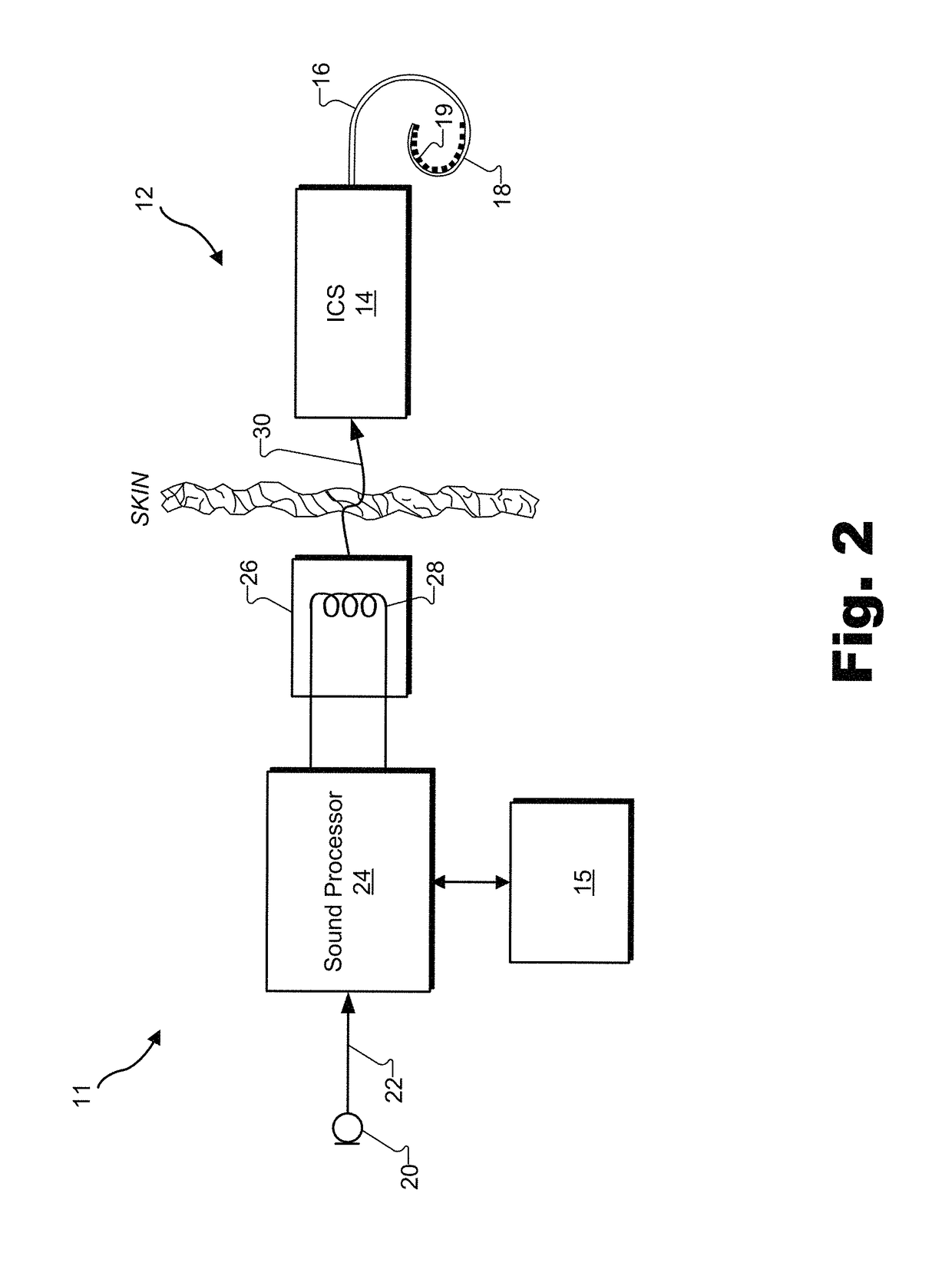System and method for neural cochlea stimulation
a cochlea and cochlea technology, applied in the field of neural cochlea stimulation, can solve the problems of conductive hearing loss, impeded normal mechanical pathways for sound to reach the hair cells in the cochlea, and impeded sound pathways, so as to achieve low power consumption of the stimulation process
- Summary
- Abstract
- Description
- Claims
- Application Information
AI Technical Summary
Benefits of technology
Problems solved by technology
Method used
Image
Examples
Embodiment Construction
[0038]FIG. 1 is a schematic representation of an example of a neural stimulation system according to the invention, comprising a programming unit 13, which may be implemented as a computer, a programming interface 15 and a CI device 10 comprising a sound processing subsystem 11 and an implantable relation subsystem 12, with the CI device being worn by a patient 17. The programming unit 13 communicates with the sound processing subsystem 11 via the programming interface 15, which may be implemented as a wired or wireless connection.
[0039]The programming unit 13 serves to control the sound processing subsystem 11 such that test stimulation signals are applied to the patient 17 via the stimulation subsystem 12 and to evaluate the test stimulation signals according to their power consumption and according to the stimulation response created by the test stimulation signals, with the stimulation response, according to a preferred embodiment, being measured by the CI device 10. According t...
PUM
 Login to View More
Login to View More Abstract
Description
Claims
Application Information
 Login to View More
Login to View More - R&D
- Intellectual Property
- Life Sciences
- Materials
- Tech Scout
- Unparalleled Data Quality
- Higher Quality Content
- 60% Fewer Hallucinations
Browse by: Latest US Patents, China's latest patents, Technical Efficacy Thesaurus, Application Domain, Technology Topic, Popular Technical Reports.
© 2025 PatSnap. All rights reserved.Legal|Privacy policy|Modern Slavery Act Transparency Statement|Sitemap|About US| Contact US: help@patsnap.com



